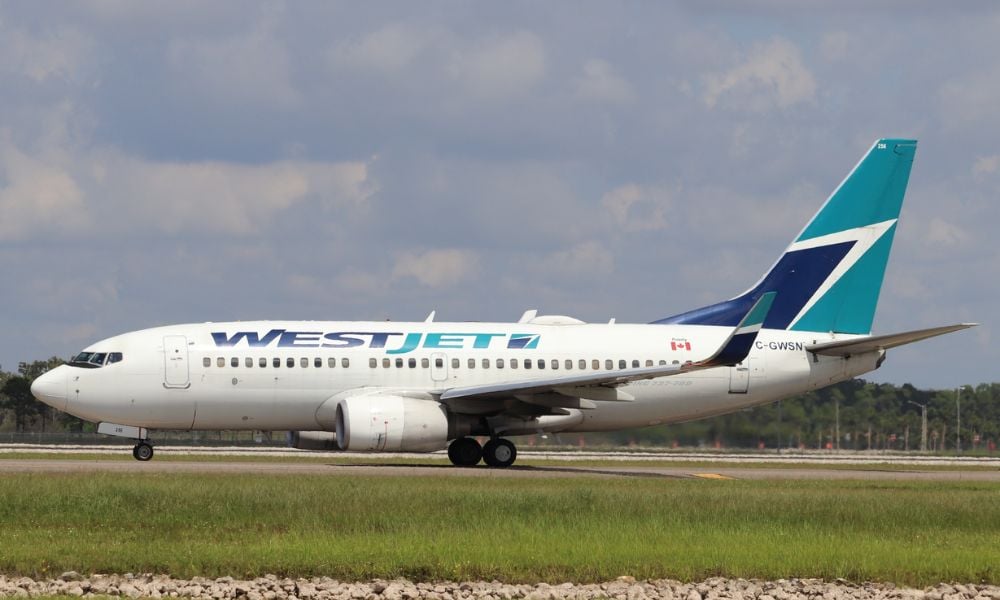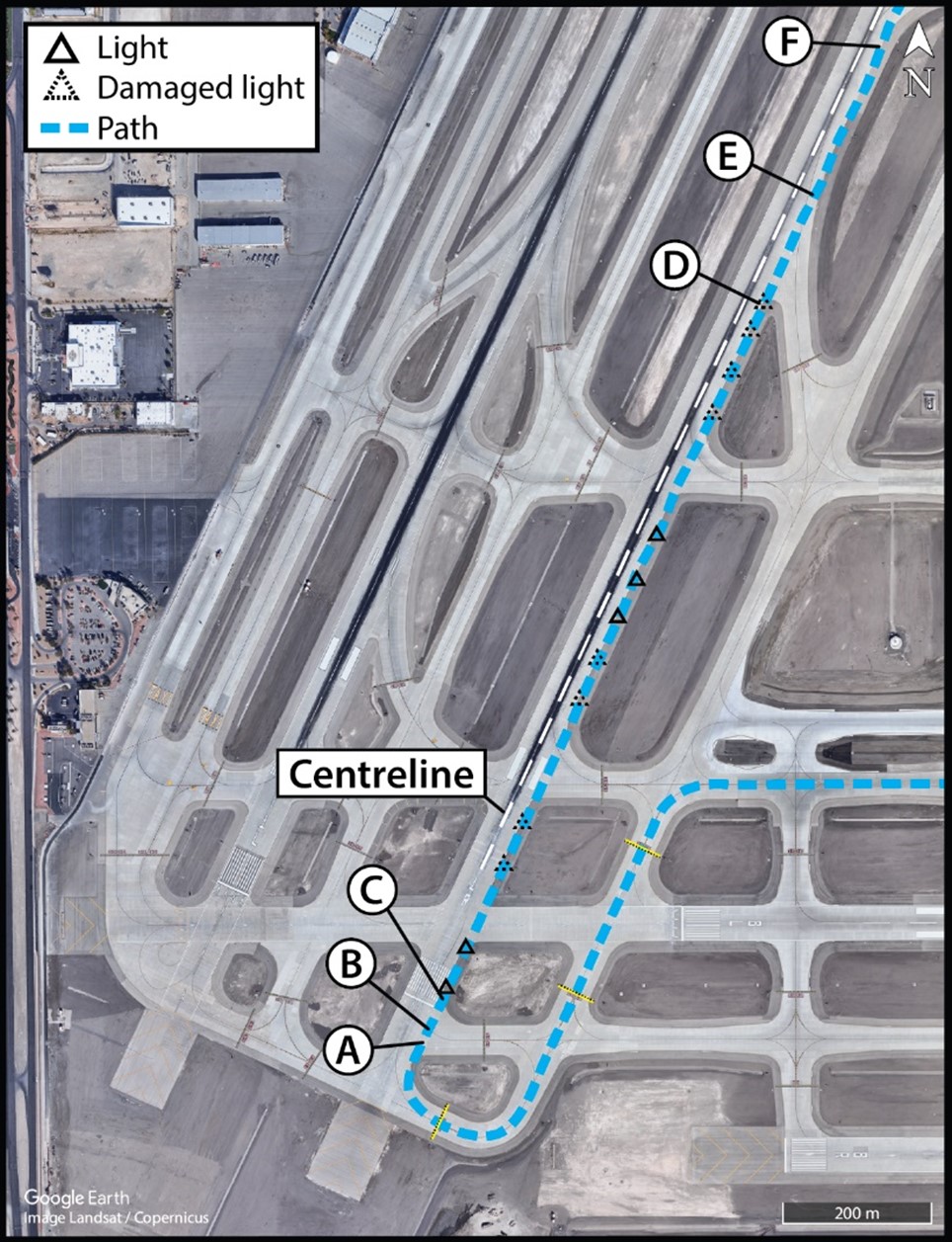Nosewheel hit eight runway edge lights on takeoff with five crew members, 109 passengers on board

Heavy workload may have caused one aircraft to hit edgelights and sustain damage upon takeoff back in 2023, according to the Transportation Safety Board of Canada (TSB).
In the evening of 16 February 2023, a WestJet Boeing 737-7CT aircraft was departing from Las Vegas to Edmonton International Airport.
The aircraft had five crew members and 109 passengers on board.
The aircraft took off while aligned with the right edge of the runway. However, its right nosewheel contacted eight runway edge lights.
The flight crew were unaware of the misaligned takeoff and subsequent contact with the edge lights.
The aircraft continued to Edmonton where it landed uneventfully.
The next day, a WestJet maintenance crew noted minor damage to the right tire on the nose landing gear. The crew replaced both nosewheel tires before releasing the aircraft back into service.
Meanwhile, the airport operator at KLAS discovered the damage to the runway edge lights 32 hours after the incident happened. It notified the airline operator of the damage to the runway edge lights eight days after the occurrence.

Source: TSB
TSB finds heavy workload of flight crew members
Following an investigation, TSB found the crew’s workload may have influenced the incident.
“The [First Officer’s] high workload contributed to his attention being focused primarily on managing tasks within the cockpit as the aircraft was taking position on Runway 01R,” TSB said. “As a result, he was unable to provide additional support in visually aligning the aircraft on Runway 01R in the proper position.”
At the time of takeoff, the FO was managing several tasks as the aircraft approached the runway holding position marking, until the point at which he assumed control during takeoff. These tasks included, but were not necessarily limited to, finding and tuning the departure frequency, receiving and reading back the take-off clearance, talking to the cabin crew, and completing the geographic flow and the Before Takeoff Checklist.
“These tasks would have consumed most of the FO’s attentional resources, to the extent that he missed the announcement of the initial take-off clearance from the air traffic control (ATC) tower controller while he was discussing the departure frequency with the captain,” said TSB.
Meanwhile, the captain’s pre-takeoff workload was divided between two main tasks: taxiing the aircraft into position and monitoring the FO’s progress.
“The task of taxiing the aircraft likely required fewer information-processing resources, given that he was familiar with the airport layout and had flown to KLAS regularly; the aircraft was 1st in line to depart on Runway 01R, and there was thus no preceding aircraft to monitor; the flight crew had taxiway centreline lighting to follow; and the weather conditions were optimal, aside from the darkness,” said TSB.
TSB also noted that the captain was “influenced by his perceived time pressure to depart” and so the captain’s attention was focused primarily on the first officer and setting take-off thrust.
“This diverted his attention away from laterally aligning the aircraft on the runway. When the aircraft was turning right onto the runway in preparation for takeoff, the captain perceived the right runway edge marking as the runway centreline and the right runway edge lights as the centreline lights.”
Mitigating risks on runways
Following the incident, WestJet issued a company memo to all pilots warning them of the potential risks of inadvertently lining up with the runway edge during nighttime departures at airports with differing runway and taxiway markings and lighting.
WestJet also put in place mitigations to minimize the threat, according to TSB. The memo also highlighted several ground-based threats at Harry Reid International Airport.
In the fall of 2023, the Harry Reid International Airport officials implemented a three-phase plan to address runway and taxiway conspicuity, which is estimated to be completed by fall 2025.





